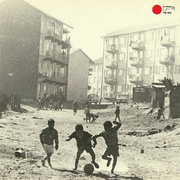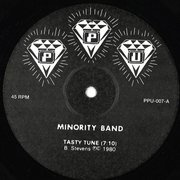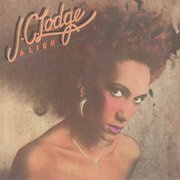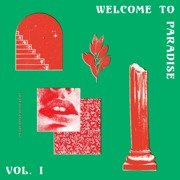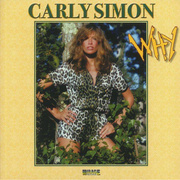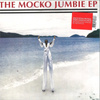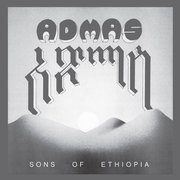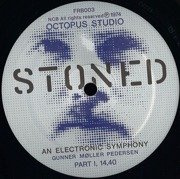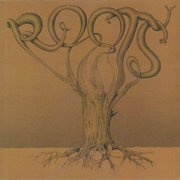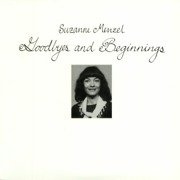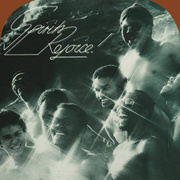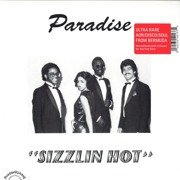- PLAY ALL / Hugo Moolenaar - a1 Children Children.mp3 (The Mocko Jumbie EP) / Hugo Moolenaar - a2 We Can Live Together.mp3 (The Mocko Jumbie EP) / Hugo Moolenaar - b1 Big Man Cry.mp3 (The Mocko Jumbie EP) / Hugo Moolenaar - b2 Give It Your Best Shot.mp3 (The Mocko Jumbie EP)
- a1 Children Children.mp3 / Hugo Moolenaar - a1 Children Children.mp3 (The Mocko Jumbie EP)
- a2 We Can Live Together.mp3 / Hugo Moolenaar - a2 We Can Live Together.mp3 (The Mocko Jumbie EP)
- b1 Big Man Cry.mp3 / Hugo Moolenaar - b1 Big Man Cry.mp3 (The Mocko Jumbie EP)
- b2 Give It Your Best Shot.mp3 / Hugo Moolenaar - b2 Give It Your Best Shot.mp3 (The Mocko Jumbie EP)
Compilation of the best tracks of Mocko Jumbie's only two albums, infectious blend between funk/soul/soca, has a disco tinged feel on 'Children Children' and a electronic edge on 'We Can Live Together', flipside holds lovely soca tunes.
The second youngest of eight children, Hugo Leanzo Moolenaar was born on September 23rd, 1948, in St. Thomas, US Virgin Islands. His mother was from Puerto Rico; his Dutch-German father worked as a contractor, but also played the guitar and had a 6-piece band that performed at house parties. The young Hugo was a born entertainer. Watching his elders, particularly an uncle who played the ukulele, he began to teach himself to play guitar, practicing on his own. Eventually he began to perform his own songs as he gradually gained confidence and ability.
As well as being a proficient musician, Hugo would also become a highly skilled Mocko Jumbie — a performer of the carnival stilt dancing tradition which has had a presence in the Virgin Islands for several hundred years, and which historians consider to have been brought to the Caribbean by enslaved West Africans.
Carnival in the Virgin Islands was revived in 1952, and from then on it became an annual event. The two most famous Mocko Jumbies at this time were John Magnus Farrell and William Richardson (to whom Hugo would dedicate his second album). The pair mentored a young talent named Alvin “Allie” Paul who later in turn would go on to teach many others. In 1964, at age 14, Paul entered the St. Thomas carnival as a stilt-dancer, and revolutionized the Mocko Jumbie style. While Farrell and Richardson would perform in a more European influenced outfit — usually a conical shaped hat, a female dress and a wire mask — Allie brought back some of the older African influence, wearing what some say is a Ghanaian-style hat and striped pants to cover the stilts.
Paul founded his own troupe in the late 1960s. He was the first to allow female students, starting by teaching family members and friends. One of his best students was Hugo Moolenaar, who quickly became known as one of the fastest dancers on the 6’ stilts, and was renowned for adding kung-fu-style moves to his performances.
In 1968, Hugo enlisted in the US army. He served in Vietnam, where he was severely injured. In 1970 he was honorably discharged and was awarded the prestigious Purple Heart for his service. Nevertheless, his injuries did not stop him from returning to Mocko Jumbie performance, and his reputation continued to grow. He also began to work for local government in St. Thomas. In the fall of 1982, Hugo was asked to become a resident performer at the Hotel Shibui in Contant Hill, St. Thomas after a convincing audition for the manager. Hugo brought in his girlfriend Juanita, a singer since high school, and a duo was born. Together, they performed Hugo’s compositions. Eventually, Juanita started to learn Mocko Jumbie as well. The couple, who were married in 1983, later founded a Mocko Jumbie school, that at its peak had 75 students.
The steady income from the hotel residency provided financial opportunity that the entrepreneurial Hugo seized. Travelling with their band to Puerto Rico, Hugo and Juanita hired a local horn section and created Hugo’s first album, entitled High, High, High, a reference to the Mocko Jumbie tradition. The cover depicts Hugo dressed in a golden outfit on stilts, on a palm beach, holding a guitar while Juanita looks on from the ground, holding their two children. Hugo’s second release, Mocko Jumbie Jamboree, came out not long after and also featured original compositions. It was recorded at the local Virgin Island studio Turtle Point. Both albums were self-distributed and feature a heady cocktail of island and popular sounds – from jump-up calypsos and kaisos to drummachine modern soul and upful disco.
During his career, Hugo performed the Mocko Jumbie on many neighboring Caribbean islands, as well as in the US, in New York, Portland, Oregon, and at the 1979 Super Bowl show in Miami, alongside the Grammacks band from Dominica. He also performed in Japan, as well as at the Festival de Música del Caribe in Cartagena, Columbia, where he appeared in a bullfighting arena with a group of the finest Mocko Jumbies and a local Virgin Islands band. But in 1989 a hurricane — ironically named Hugo —destroyed many of the Moolenaar’s belongings, including master tapes and photos, leaving them with very little to show for their long careers.
Hugo retired in 2008, after working 32 years for the local government. In 2009, the Virgin Islands Department of Tourism adapted a new logo, a Mocko Jumbie. I’d like to think Hugo Moolenaar was a part of the reason.
Hugo passed away on January 25th, 2012, from cancer. It is thought that the disease may have been a result of exposure to Agent Orange during his military service in Vietnam.
To his very last day, Hugo lived by his motto: “Peace, Love and Happiness Always”.





